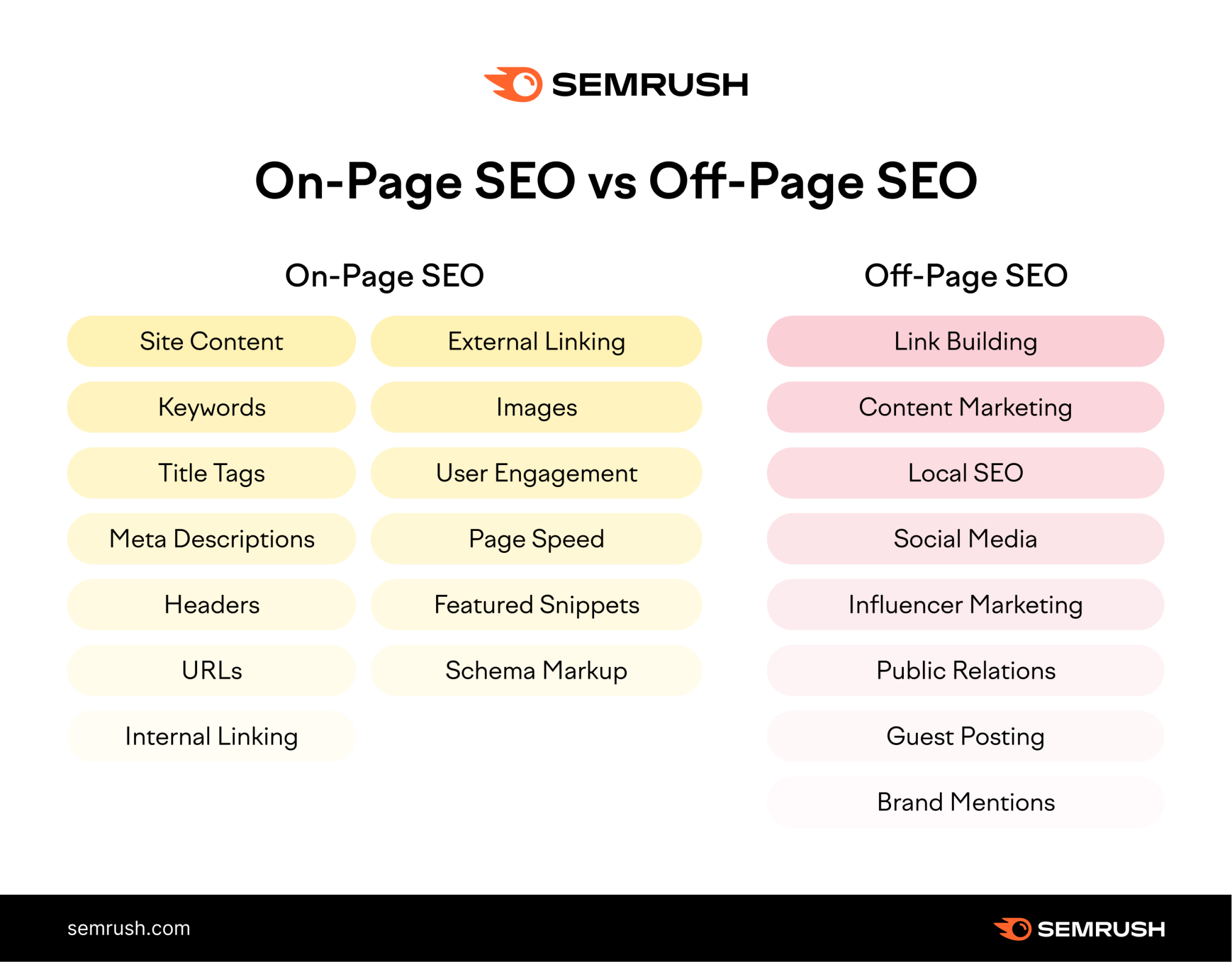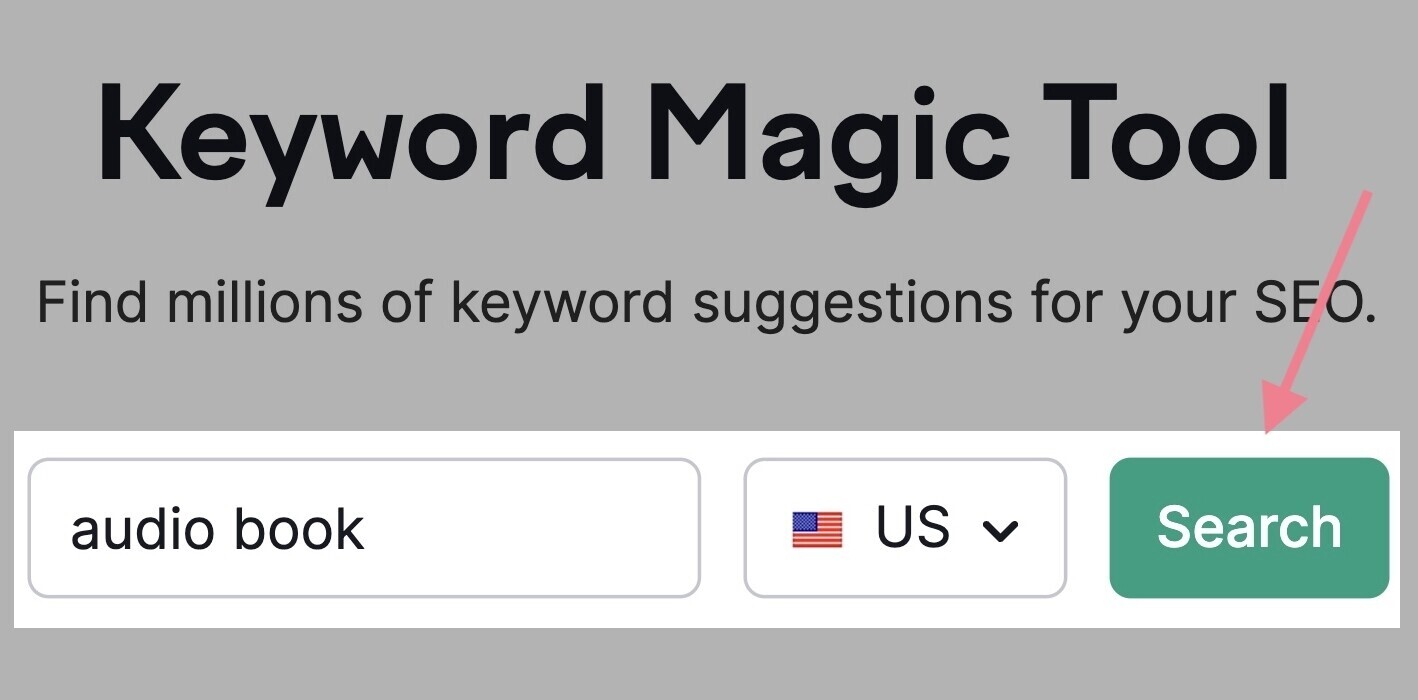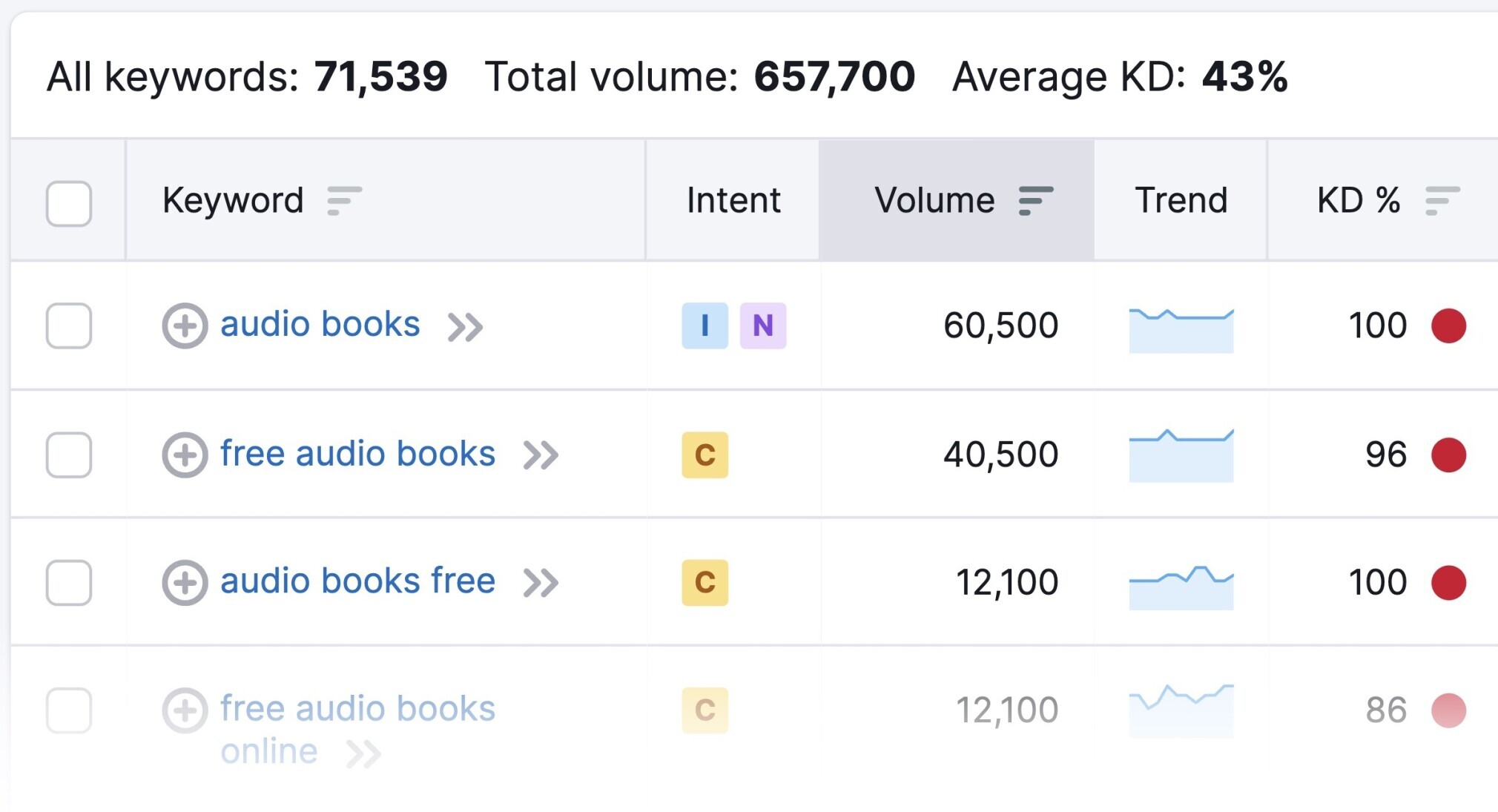On-Page SEO: What It Is and How to Do It

What Is On-Page SEO?
On-page SEO (sometimes called on-site SEO) is the process of optimizing parts of your webpages so they rank higher on search engines and get more search engine traffic.
This includes updating on-page content, title tags, internal links, and more.
Search engines like Google look at keywords and other on-page SEO cues to check whether a page matches a user’s search intent. And if the search engine decides the page will be useful to the user, it will display it higher in search results.
Below, we’ll cover how to do on-page SEO optimization and a variety of on-page SEO examples.
What’s the Difference Between On-Page SEO and Off-Page SEO?
On-page SEO covers anything you can do on a webpage (or internally) to improve your rankings.
While off-page SEO covers anything you can optimize outside of your site (or externally) in an attempt to boost your rankings. Backlinks are arguably the biggest off-page SEO factor. Other examples include social media and PR.
Both are important parts of any good SEO strategy.
But you have more control over on-page SEO factors. So focusing on those is a good place to start when building out your SEO strategy.

Why Is On-Page SEO Important?
Search engines use keywords and other on-page SEO elements to check whether a page matches a user’s search intent.
And if the page is relevant and useful, Google serves it to the user.
In other words, Google pays attention to on-page SEO signals when ranking pages.
The Google algorithm is always changing, but Google continues to prioritize user experience. Google recommends focusing on “people-first content.”
Meaning creating valuable content that matches user intent is more important than ever.
Now, let’s take a look at how you can update your content to reflect on-page SEO best practices.
How to Optimize Your Content for On-Page SEO (+ Examples)
On-page SEO is much more than just adding keywords to your webpages.
Here’s a brief explanation of how the ranking process works:
Google starts by “crawling” or assessing pages on the web.
Next, Google may “index” the page. It uses many factors—including on-site SEO factors—to determine what the page is about and how it should be ranked.
If Google decides to index a page, it can then be accessed via Google Search.
But Google doesn’t guarantee that every page will be indexed. Or show up in search results at all.
So it’s important to tweak the on-page SEO elements covered below to best communicate to Google what your page is about.
That way, it can rank you for relevant queries in the search results.
Let’s get started.
Write Unique, Optimized Content
One of the most important on-page SEO steps you should take is to create high-quality content that matches your readers’ search intent.
Start by performing keyword research to find relevant topics and target keywords.
For this example, we’ll use Semrush’s Keyword Magic tool.
Enter the topic you want to research and click“Search.”We’ll use the keyword “audio book” as our example.

You’ll get a list of keywords related to your seed keyword, sorted by search volume.

High search volume can be useful to target. But pay attention to the keyword difficulty (KD%) level, too. It’s much more difficult to rank for more competitive keywords (which have higher KD% scores).

Target less competitive long-tail keywords, too. They often have lower search volume but lower keyword difficulty. Which means they can be easier to rank for.
The Keyword Magic tool automatically sorts related keywords into relevant categories.
They’re located in the left-hand sidebar. You can narrow your research by selecting one.